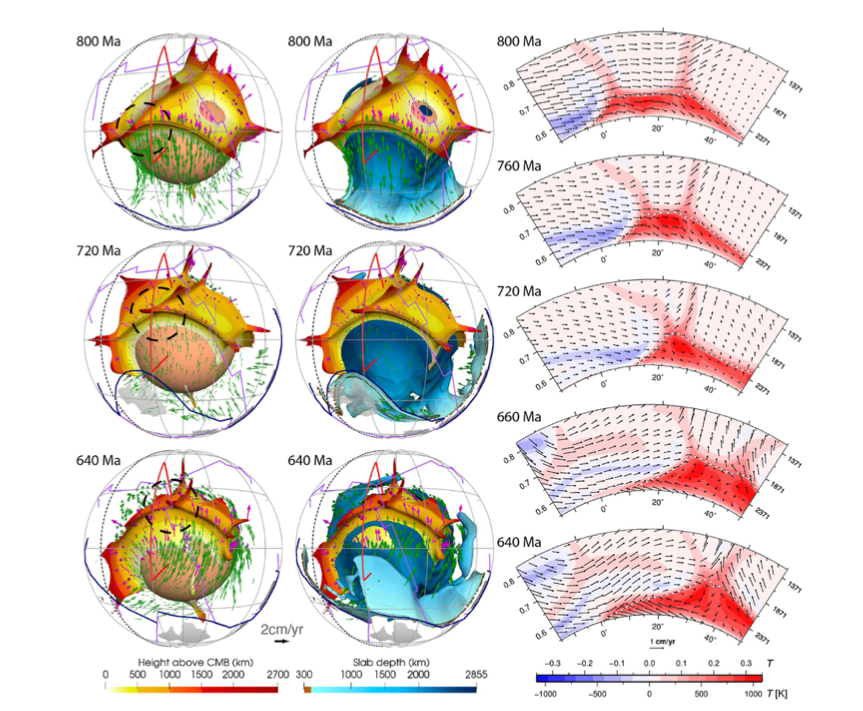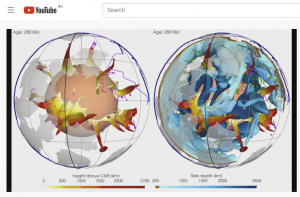Seismic studies have revealed two Large Low-Shear Velocity Provinces (LLSVPs) in the lowermost mantle. Whether these structures remain stable over time or evolve through supercontinent cycles
is debated. Here we analyze a recently published mantle flow model constrained by a synthetic plate motion model extending back to one billion years ago, to investigate how the mantle evolves in response to changing plate configurations. Our model predicts that sinking slabs segment the basal thermochemical structure below an assembling supercontinent, and that this structure eventually becomes unified due to slab push from circum-supercontinental subduction. In contrast, the basal thermochemical structure below the superocean is generally coherent due to the persistence of a superocean in our imposed plate reconstruction. The two antipodal basal thermochemical structures exchange material several times when part of one of the structures is carved out and merged with the other one, similarly to “exotic” tectonic terranes. Plumes mostly rise from thick basal thermochemical structures and in some instances migrate from the edges towards the interior of basal thermochemical structures due to slab push. Our results suggest that the topography of basal structures and distribution of plumes change over time due to the changing subduction network over supercontinent cycles.
![]()


